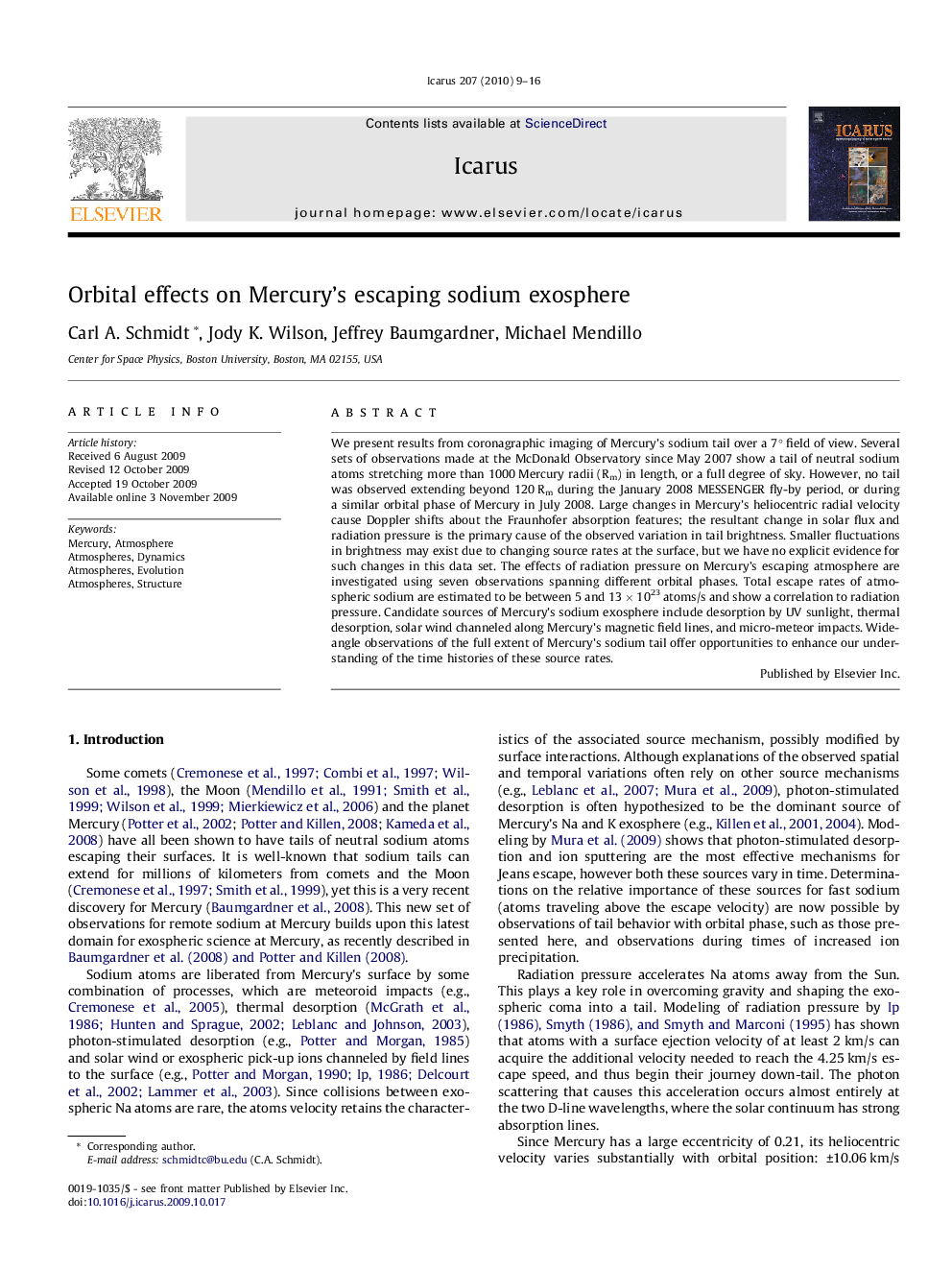| Article ID | Journal | Published Year | Pages | File Type |
|---|---|---|---|---|
| 1774468 | Icarus | 2010 | 8 Pages |
Abstract
We present results from coronagraphic imaging of Mercury's sodium tail over a 7° field of view. Several sets of observations made at the McDonald Observatory since May 2007 show a tail of neutral sodium atoms stretching more than 1000 Mercury radii (Rm) in length, or a full degree of sky. However, no tail was observed extending beyond 120 Rm during the January 2008 MESSENGER fly-by period, or during a similar orbital phase of Mercury in July 2008. Large changes in Mercury's heliocentric radial velocity cause Doppler shifts about the Fraunhofer absorption features; the resultant change in solar flux and radiation pressure is the primary cause of the observed variation in tail brightness. Smaller fluctuations in brightness may exist due to changing source rates at the surface, but we have no explicit evidence for such changes in this data set. The effects of radiation pressure on Mercury's escaping atmosphere are investigated using seven observations spanning different orbital phases. Total escape rates of atmospheric sodium are estimated to be between 5 and 13 Ã 1023 atoms/s and show a correlation to radiation pressure. Candidate sources of Mercury's sodium exosphere include desorption by UV sunlight, thermal desorption, solar wind channeled along Mercury's magnetic field lines, and micro-meteor impacts. Wide-angle observations of the full extent of Mercury's sodium tail offer opportunities to enhance our understanding of the time histories of these source rates.
Related Topics
Physical Sciences and Engineering
Earth and Planetary Sciences
Space and Planetary Science
Authors
Carl A. Schmidt, Jody K. Wilson, Jeffrey Baumgardner, Michael Mendillo,
